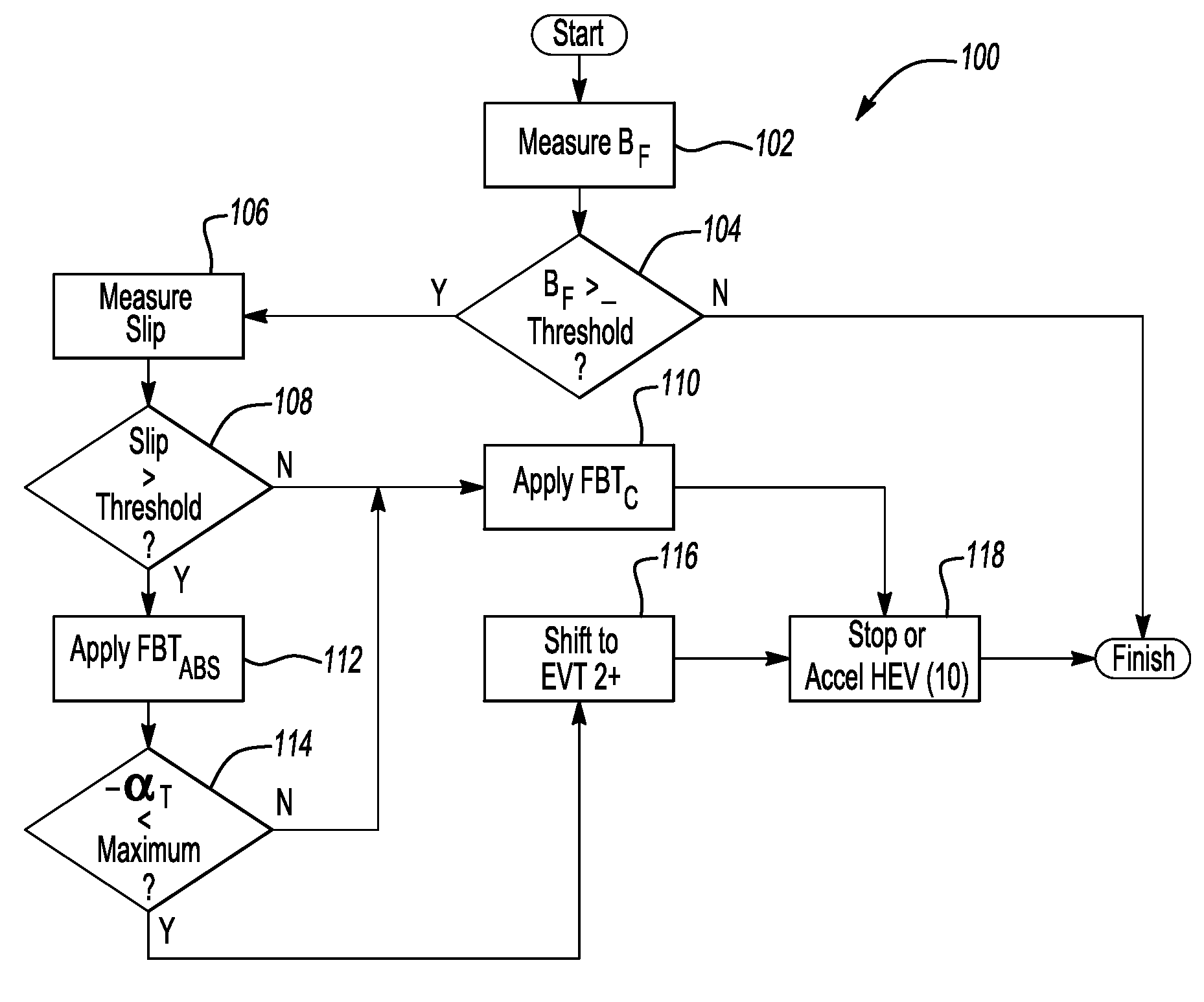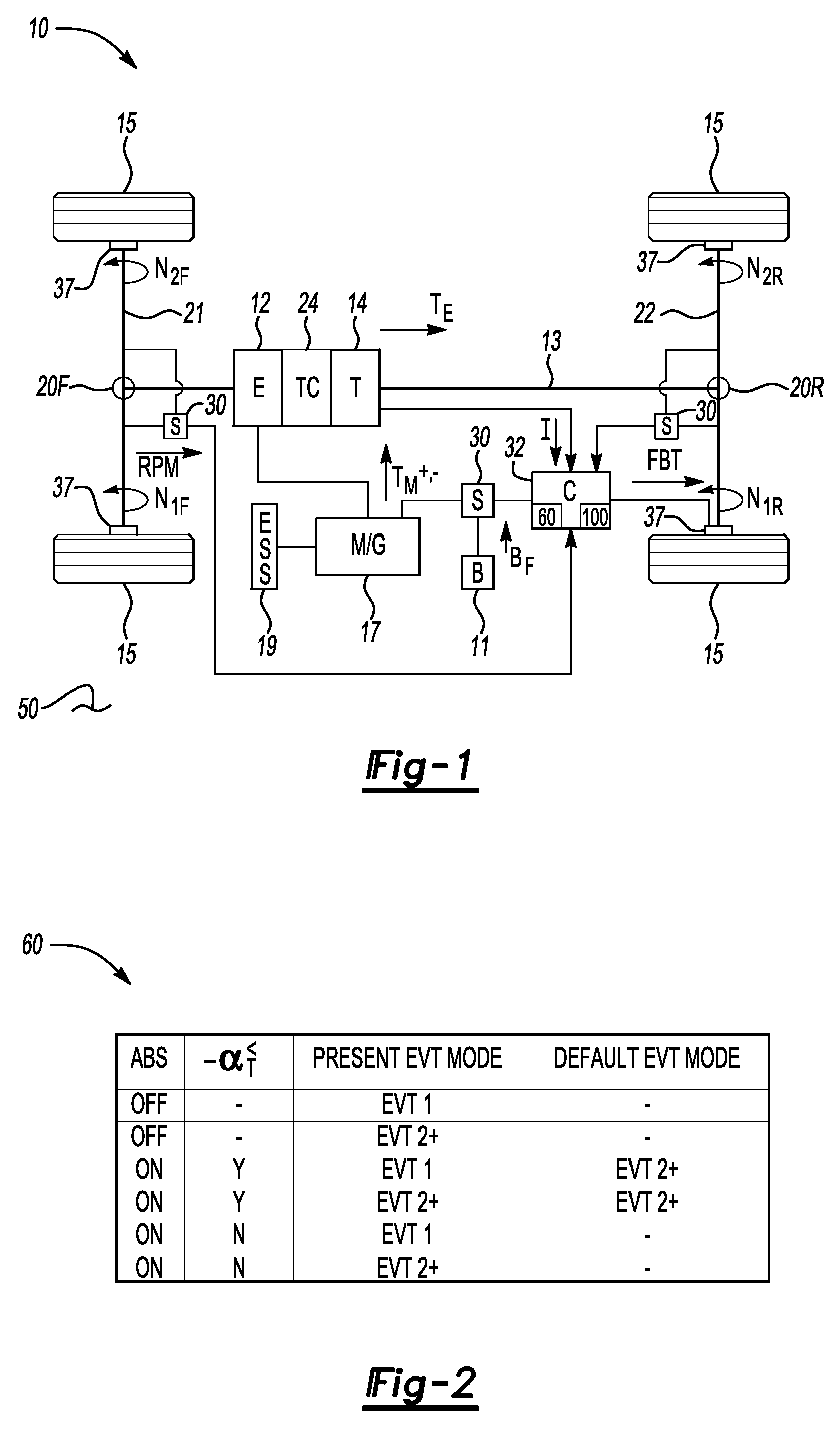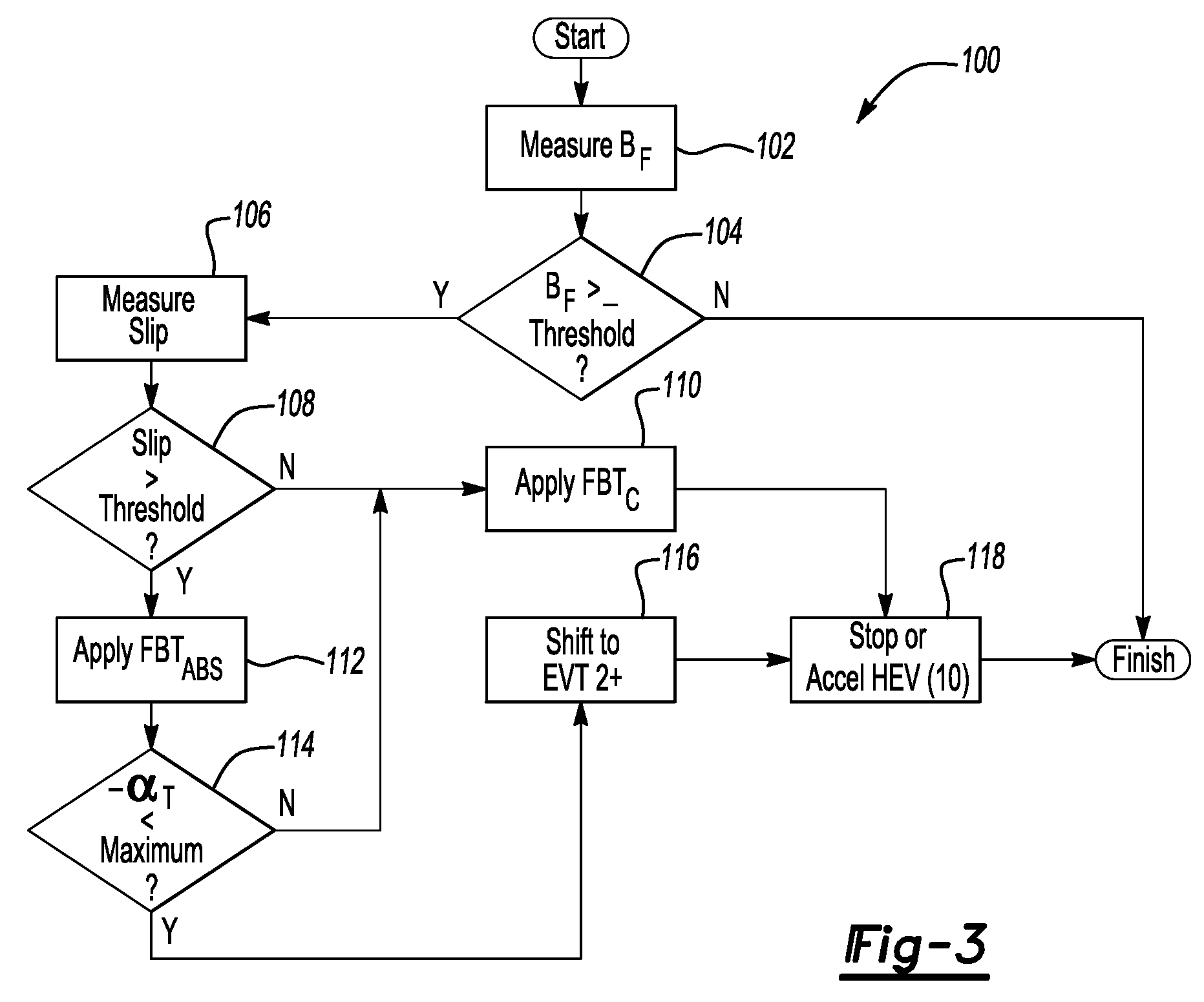Method and Apparatus For Optimizing Braking Control During A Threshold Braking Event
a braking control and threshold technology, applied in the direction of dynamo-electric converter control, hybrid vehicles, motor/generator/converter stoppers, etc., can solve problems such as driveline disturbance, reduce stopping distances, and minimize such driveline disturbances.
- Summary
- Abstract
- Description
- Claims
- Application Information
AI Technical Summary
Benefits of technology
Problems solved by technology
Method used
Image
Examples
Embodiment Construction
[0016]With reference to the Figures, wherein like reference numerals refer to like or similar components throughout the several figures, and beginning with FIG. 1, a hybrid electric vehicle (HEV) 10 is shown that includes an energy conversion system (E) 12, an electrical storage system (ESS) 19, and at least one electric motor / generator (M / G) 17. The energy conversion system 12 can be drivingly connected to an automatic transmission (T) 14 via a hydrodynamic torque converter assembly (TC) 24 as shown, via another torque transfer mechanism such as a clutch, or via a direct connection to a set of drive wheels 15. The HEV 10 includes an electronic control unit or controller 32 having an algorithm or method 100 as described below with reference to FIGS. 2 and 3.
[0017]The controller 32 refers broadly to a distributed or central control module, which can include such control modules and capabilities as might be necessary to operate the HEV 10 in the desired manner, including an engine con...
PUM
 Login to View More
Login to View More Abstract
Description
Claims
Application Information
 Login to View More
Login to View More - R&D
- Intellectual Property
- Life Sciences
- Materials
- Tech Scout
- Unparalleled Data Quality
- Higher Quality Content
- 60% Fewer Hallucinations
Browse by: Latest US Patents, China's latest patents, Technical Efficacy Thesaurus, Application Domain, Technology Topic, Popular Technical Reports.
© 2025 PatSnap. All rights reserved.Legal|Privacy policy|Modern Slavery Act Transparency Statement|Sitemap|About US| Contact US: help@patsnap.com



